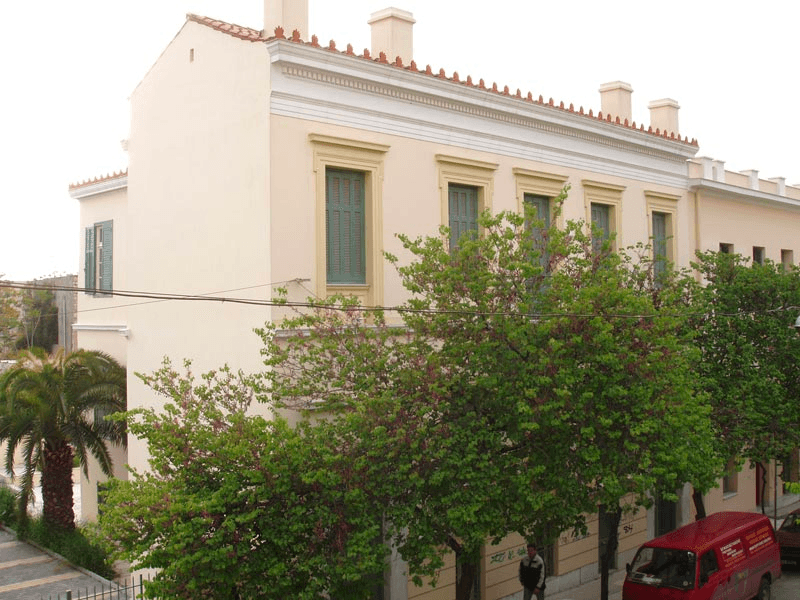Descubriendo los museos del exilio político en Atenas
Conozca más sobre el lado de Grecia que generalmente se pasa por alto
Atenas evoca sin esfuerzo imágenes de la magnífica Acrópolis, pero esta cautivadora ciudad cuenta con una gran cantidad de tesoros culturales que esperan ser desenterrados. En medio de su vibrante tapiz, una joya a menudo pasada por alto que languidece en el barrio de Keramikos son los Museos del Exilio Político, dedicados a los exiliados políticos encarcelados en las islas griegas.
Breve historia
A lo largo de la historia, Grecia ha sido testigo de períodos de agitación política y represión que llevaron al exilio de disidentes, activistas y figuras de la oposición. Desde la década de 1920 hasta la de 1970, muchas de las islas griegas se utilizaron en diferentes momentos para encarcelar y albergar a estos exiliados. Estas personas, sin ser juzgadas ni acusadas de un delito específico, fueron despojadas de sus derechos y libertades y se vieron obligadas a abandonar sus hogares, familias y comunidades.
Algunos de los antiguos exiliados querían crear un espacio para mostrar y compartir información sobre este período particular de la historia política, centrándose en el exilio y las persecuciones políticas. Esto llevó a la creación de los museos del exilio político en Atenas.
Museos del exilio político
No hay uno, sino dos, museos de este tipo en Atenas: elMuseo de Makronissosy elMuseo del Exilio Político Ai StratisComo sugieren sus nombres, los museos están dedicados a mostrar las vidas de aquellos que fueron exiliados a las islas de Makronissos y Ai Stratis respectivamente.
Makronissos es uno de los sitios más notorios por ser una prisión política y campo de concentración, habiendo albergado exiliados desde 1947 hasta 1961. Por otro lado, Ai Stratis es la isla con la estancia más larga de exiliados, habiendo tenido prisioneros desde 1926 - 1963.
Estos museos son un recordatorio esclarecedor del período oscuro de la historia griega, cuando el exilio político se utilizó como herramienta de represión. Sin embargo, también son un testimonio de la resiliencia del espíritu humano.

En los museos, podrá encontrar fotografías, cartas y recortes de periódicos que brindan un contexto histórico a las exhibiciones del museo. Los museos también exhiben exhibiciones que revelan indicios de las duras vidas que soportaron los prisioneros en las islas.

Pero más allá de esto, también hay una serie de exhibiciones que incluyen bocetos, obras de arte y artesanías realizadas por los exiliados y prisioneros durante ese período de tiempo. Estos objetos expresan no solo la necesidad de los exiliados y prisioneros de sobrevivir mediante la venta de estas obras de arte y artesanías, sino también el deseo de comunicar sus sentimientos tanto a su propia gente como al mundo exterior. Estas exhibiciones son un buen reflejo de cómo los exiliados políticos pudieron crear arte, música y literatura incluso en las circunstancias más difíciles.
También podrás ver en exposición artículos domésticos, uniformes y otros objetos personales de los prisioneros, lo que te permitirá echar un vistazo a la vida de los exiliados.
Consejos para visitas
Los dos museos del exilio político son relativamente pequeños, pero, si bien no cuentan con una gran colección de objetos, son muy interesantes y ofrecen una buena perspectiva de una faceta de Grecia que los visitantes suelen pasar por alto.

Ambos museos están situados uno al lado del otro enCalle Agion Asomaton 31, a la vuelta de la esquinaMuseo Benaki de Arte IslámicoLos museos tienen un exterior muy modesto que parece una residencia, por lo que puede ser fácil pasarlos por alto.
Las exposiciones y los textos de los museos están en griego. Lo mejor es que puedas leer el idioma, pero si no puedes, prepara la aplicación Google Translate para que te ayude a comprender mejor las exposiciones.
Dedica algún tiempo a hablar con los propietarios de los museos; ellos podrán compartirte historias muy interesantes y detalladas detrás de las exhibiciones, mejorando tu experiencia general.
Los museos tienen horarios de apertura relativamente cortos, por lo que es posible que quieras planificar tu visita en consecuencia.